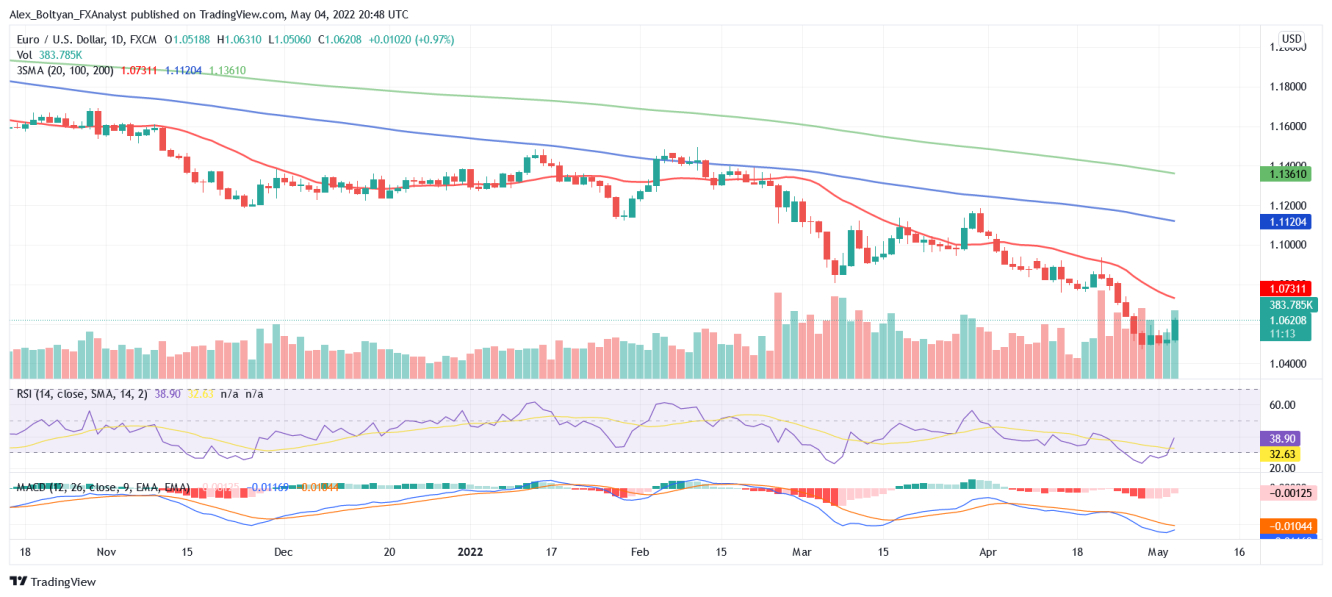The EUR/USD pair pushed higher as the dollar weakened across the board following the Federal Reserve's decision to raise the Fed funds target range by 50 bps to 0.75-1.00% as expected. This was the first 50-basis point hike by the Fed in 22 years.
The EUR/USD climbed to a daily high of 1.0631 during the subsequent press conference by Chair Jerome Powell. Investors focused on not-so-hawkish comments with the 50 bps rate increase already priced in. Powell said that they were not actively considering 75 bps increases. Instead, he pointed out that it will likely be 50 bps increases at the next two meetings if economic conditions warrant it.
The Fed also announced it would begin its Quantitative Tightening (QT) program – reducing its balance sheet – on Jun. 1. However, the reduction will be at a slower pace than the market had forecasted. The schedule will see $30 billion of Treasurys and $17.5 billion on mortgage-backed securities roll-off. After three months, the caps will be doubled.
All in all, Powell wasn’t as aggressive as anticipated, which led to a pullback in Treasury yields and the dollar. Still, the long-term fundamental picture remains the same, with monetary policy divergences weighing on the EUR/USD.
From a technical perspective, the EUR/USD pair holds the bearish tone despite Wednesday’s bounce as indicators remain in negative territory while the price trades below its main moving averages in the daily chart.
On the upside, the next resistance is offered by the 20-day SMA at 1.0730, followed by the 1.0800 psychological level. If the euro can rise past this latter, it could ease the short-term bearish pressure. On the other hand, immediate support comes at the 1.0500 level, and then the cycle low of 1.0470 and the 1.0400 ahead of the 2017 yearly low at 1.0340.


